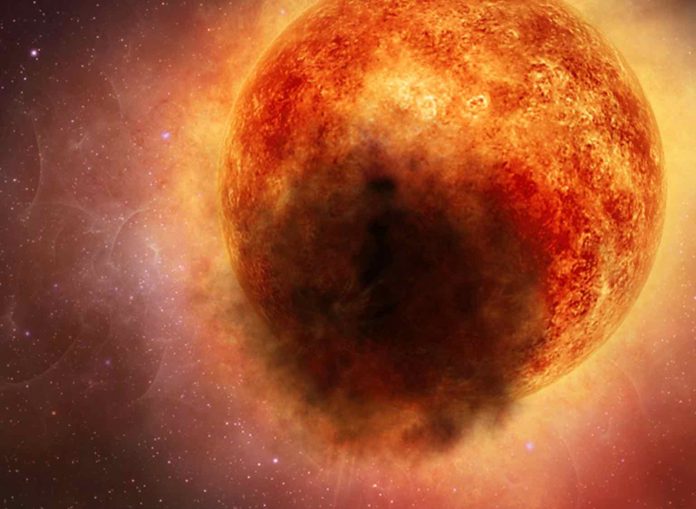Hey, remember Betelgeuse? It caused quite a kerfuffle both among astronomers and normal people in late 2019 and early 2020 when the star’s brightness dropped precipitously. There was much speculation in social media that it might explode, but astronomers knew this was incredibly unlikely. What they were more concerned with was why the star suddenly dimmed so dramatically: What was going on in the upper layers of this enormous star that could make such a huge difference in its light?
It seems pretty clear now that the red supergiant expelled an enormous cloud of dust, which blocks visible light, dimming it substantially. It’s not clear why this happened and why on such a huge scale. Massive stars like Betelgeuse have complicated effects going on in their upper layers which can cause the star to physically pulsate, getting bigger and smaller over time. It’s likely some other event happened in the star (perhaps a rising plume of hot gas) coupled with the normal pulsation, causing the creation of the dust that dimmed it.
This event, and the efforts to understand it, reminded astronomers that we really don’t understand what’s going inside this star very well, and in fact there are still basic facts about it we don’t know! For example, its size, mass, age, and distance are all extremely difficult to determine.
However, a group of astronomers took a look at some old data of the star to measure its brightness changes, and by feeding them into some complicated models were able to get new estimates of these characteristics. Some of what they found is similar to older estimates, but their estimate of the size of the star has been revised downward quite a bit. The old estimates were it being 1.5 billion kilometers or so across, while the new one is now just over a billion. That’s still ginormous, but a lot smaller than previous thinking
But if it’s smaller, that means in turn it must be closer to us. They get a number of about 530 light years, 25% closer than previous estimates. That’s significant!
Before going on, let me pause and say that if they’re correct, and Betelgeuse is closer to us than previously thought, we are still in no danger if it goes supernova. At their new estimated distance it’s still way too far away to hurt us if it explodes.
Oh, and the new research indicates it’ll be a long, long time before it explodes anyway. Rest easy.
The astronomers wanted to investigate Betelgeuse using physical models of how gas flows inside the star, and how seismic waves travel through it, because these depend on the internal structure of the star (a little like how seismic waves traveling through the Earth tell geologists about the structure inside our planet). The change in brightness in the star over time depends on these factors as well.





























